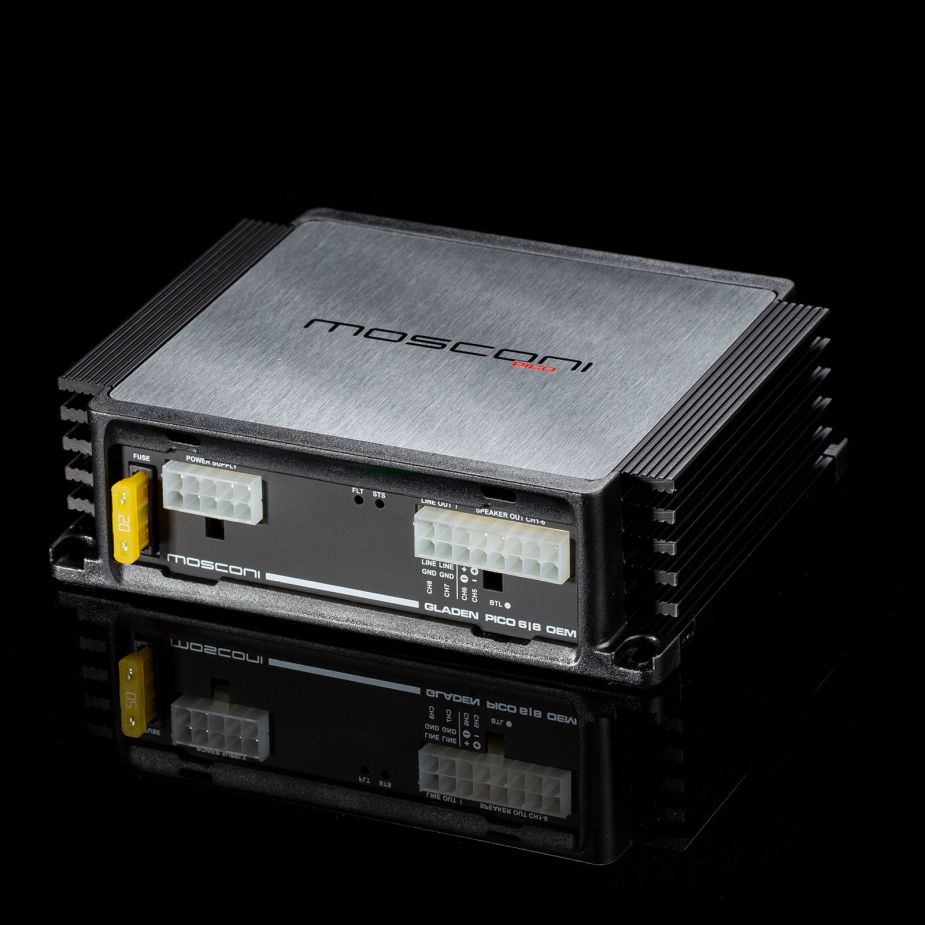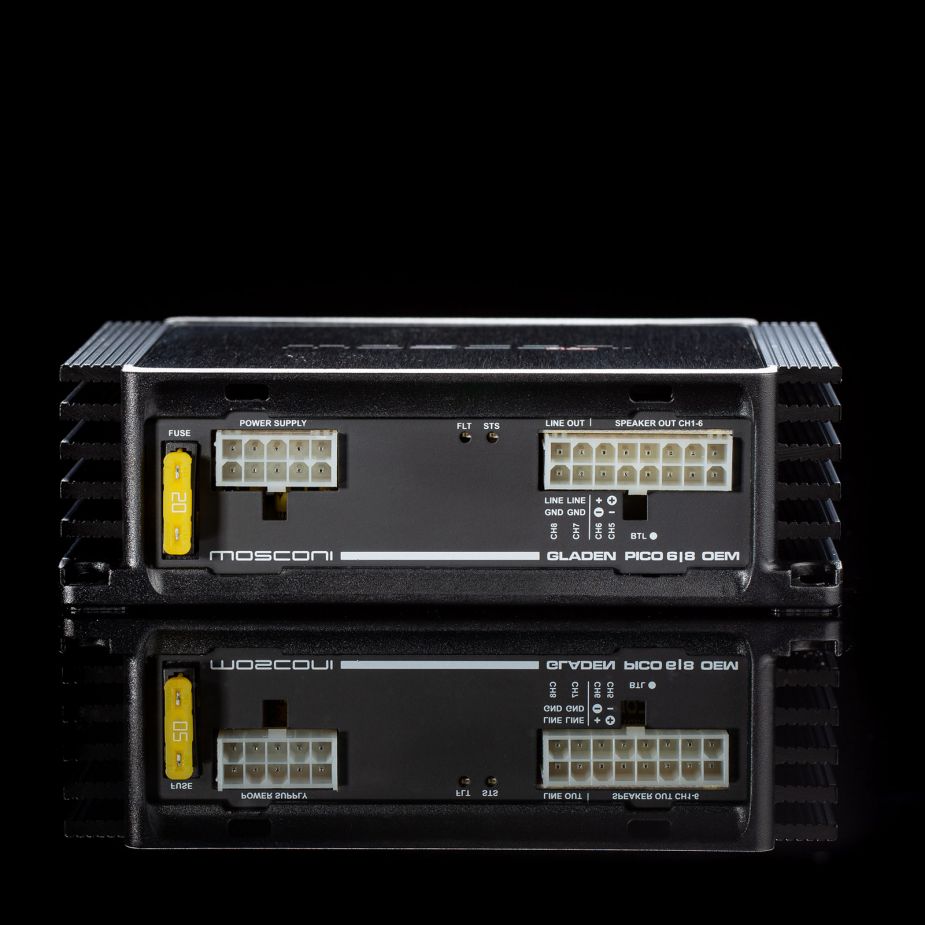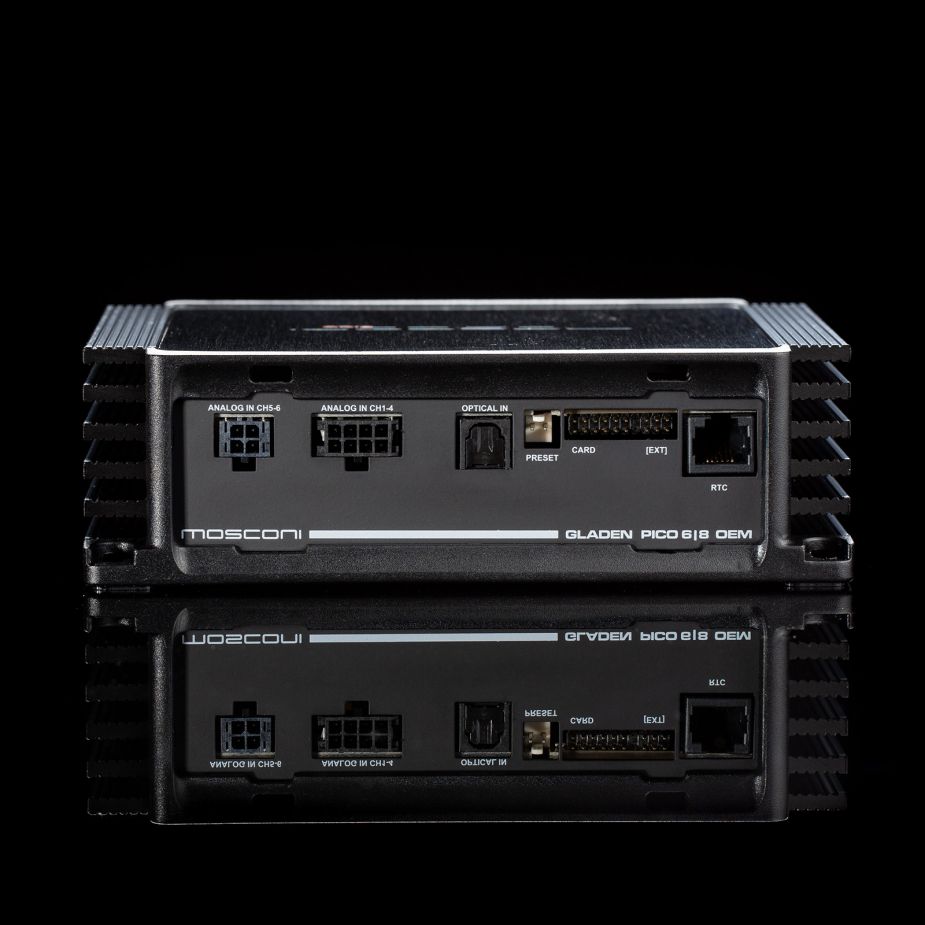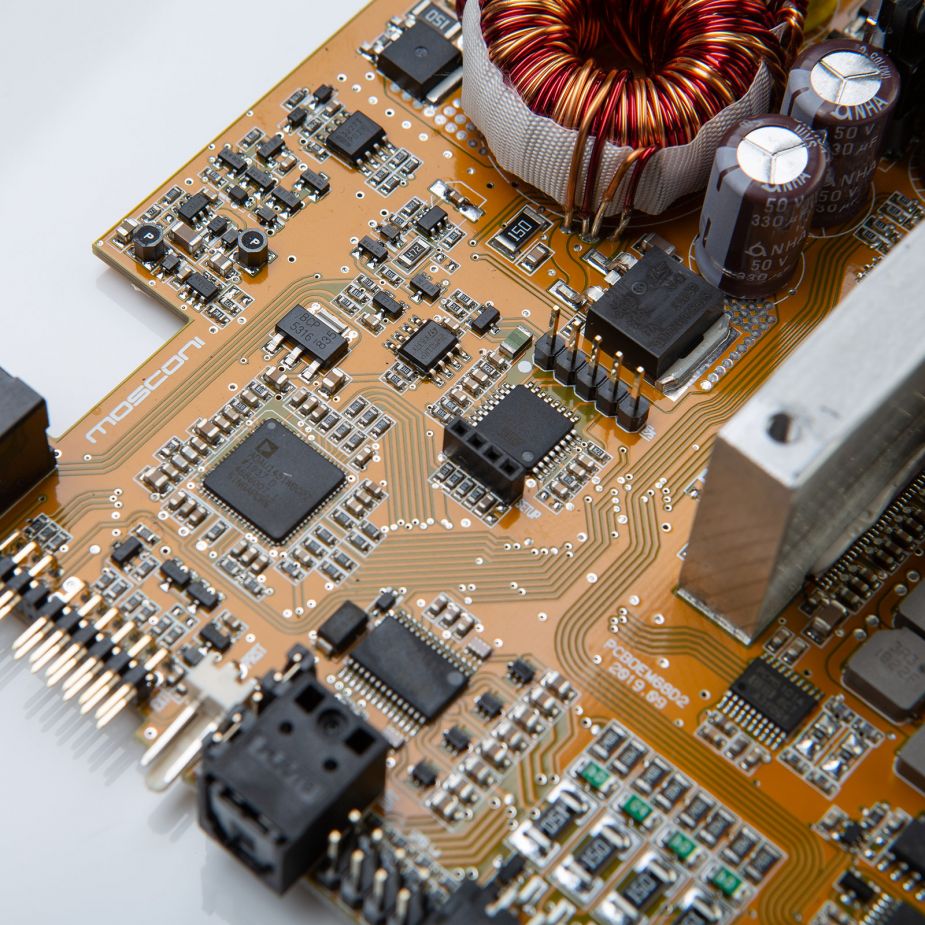6 channel PWM amplifier with integrated DSP
Mosconi Pico 6|8 DSP
- 6 channel amplifier
- Class D technology
- Integrated 8 channel DSP
- Up to 440 Watts total power

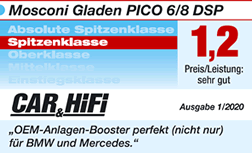
Overview Mosconi Pico 6|8 DSP
Perfect OEM integration:
Powerful DSP amplifier optimized for factory radio use. Six analog inputs up to 30 V, flexible routing, 3 x input EQ and delay. With 4 x 50 Watts + 2 x 90 Watts ideal for active and semi-active systems, as well as classic front + rear + sub application. With two digital inputs (SP-Dif and BT+) and two processed line outs ready for the future.
Transducerless high-speed PWM power amplifiers:
High-efficiency PWM output stages with the fastest carrier frequency in the world today (> 2 MHz). The modulation is done without DAC directly from the 48 kHz TDM signal of the DSP, thus the noise floor goes to zero and THD+N ~ 0.02 % / 1 W.
Input:
- 4 x analog inputs balanced (high-level) up to 30 V
- 2 x analog inputs switchable high level / low level)
- 1 x digital input SP-Dif optical (8 kHz - 96 kHz sampling rate)
- 1 x bt port with SP-Dif - TTL (8 kHz - 96 kHz, e.g. for Mos_BTS bt streaming module)
- bt extended digital audio port (BT+)
(flexible 8 kHz - 384 kHz synchronous digital input for audio sources with 2 - 16 channels, direct DSP access without jitter, e.g. for MOS BTS-LD4C BT streaming module or extended analog inputs)
DSP:
- 912 MHz, 32-bit audio port, 64-bit core
- Double precision 56 Bit filter calculation
- 6144 SIMD instructions per sample at 48 kHz
ASRCs from 1:8 up to 7.75:1 ratio and 139 dB DNR
CONTROL:
- 1 x remote connector (analog, for RTC.2 roti remote control)
- 1 x bt control port (Connection MOS-BT3.0 (app control), RC-Can (CAN-Bus control), MOS_USB2.0 (programming dongle)
- 1 x remote out, 1 x remote in, auto remote for high level connection
- Connections with MOLEX® plug contacts
- Very small size with low heat generation, best suited for installation behind panels
SOFTWARE:
- 3 x 9 band parametric input EQ (de-equalizing)
- 6 x input delay 0 - 3 ms / 0.01 ms (de-delay)
- 10 x input level control digital (signal conditioning)
- Flexible mixer for signal routing
(Side separated, can sum and subtract, 10 inputs to 4 x 2 output groups) - 6 x 30 band or 4 x 30 band + 2 x 15 band group EQ
(parametric, relative phase remains stable) - 8 x 10 band output filters
- Highpass / lowpass / highshelf / lowshelf / notch / allpass 1st + 2nd order / speaker-EQ)
- 8 x speaker-delay 0 - 12 ms, 0,02 ms
- 8 x speaker phase switch
Technical Data Mosconi Pico 6|8 DSP
Output power/output side:
-
Output power @ 4Ω:
4 x 50 Watts (channel 1 - 4) 3-Ohm stable (not bridgeable!)
-
Output power @ 4Ω:
2 x 90 Watts (channel 5 - 6) 2-Ohm stable / bridgeable
-
Output power @ 4Ω:
4 x 50 Watts + 1 x 240 Watts (bridged channel 5 + 6)
-
Line Out:
2 x 2 Vrms Line Out
Specifications:
-
Input voltage:
0,3 - 15 V
-
Overall efficiency:
> 80 %
-
Auto-On (only High Level):
Off - BTL
-
Dimensions:
150 x 133 x 46 mm
-
Weight:
800 Gramm


